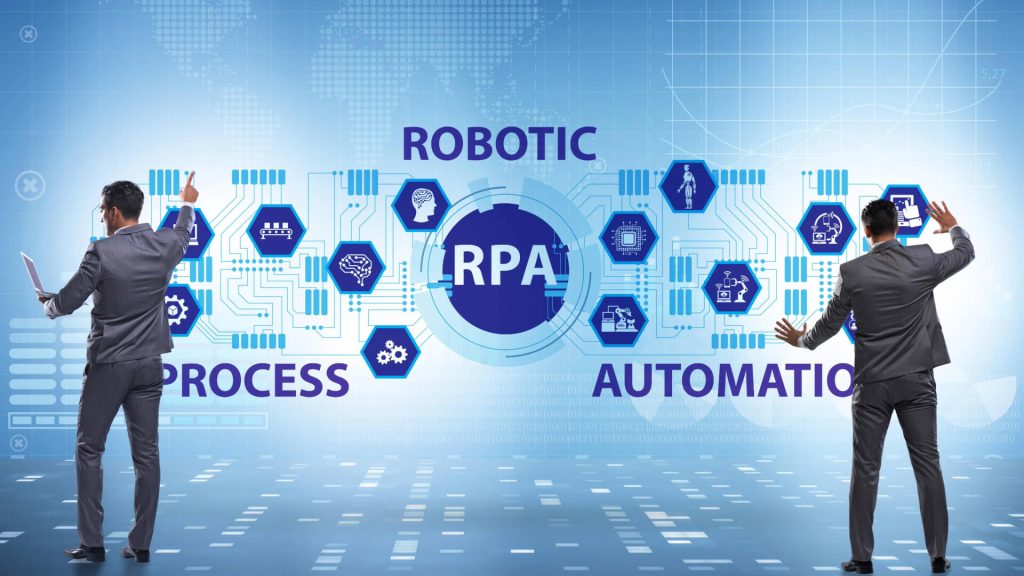
Robots can collaborate with RPA and AI to streamline business processes – discover how.
In today’s digital and data-driven world, businesses seek ways to streamline their operations and improve their bottom line. Two key technologies that have emerged in recent years to help achieve this are robotic process automation (RPA) and artificial intelligence (AI). RPA involves using software robots to automate repetitive tasks such as data entry, processing, and validation. This frees up employee time and reduces errors, resulting in greater efficiency and accuracy. Conversely, AI is all about computer systems that can learn and make decisions in a way that mimics human intelligence. When used alongside RPA, AI can help robots make more sophisticated decisions and adapt to changing circumstances.
Advantages and considerations of Using Robots to Execute Business Processes
One of the most significant advantages of using robots to execute business processes is that they can work around the clock and never get tired or make mistakes due to a lack of focus. This means tasks can be completed more quickly and accurately, improving efficiency and productivity. Another significant benefit of using RPA and AI is the ability to scale operations more quickly and efficiently. By using robots, businesses can automate tasks that would typically require multiple humans to complete, allowing them to grow their operations without adding additional headcount.
Robots can also enhance customer experience by automating customer service and support tasks, leading to faster response times and increased satisfaction. Automation can also make gathering and analyzing data easier, enabling businesses to gain insights into their operations and make more informed decisions. However, it’s important to note that implementing RPA and AI requires careful planning and management.
How to implement AI and RPA in business processes
Businesses must identify the most appropriate tasks to automate and ensure that the robots are integrated effectively with existing processes and systems.
Security is another important consideration, with businesses needing to implement robust measures to protect sensitive data and prevent unauthorized access.
One of the key challenges of implementing RPA and AI is ensuring that employees are comfortable with the new technology and understand how it will impact their roles. This requires clear communication and training programs to help employees adapt.
Despite these challenges, the benefits of using robots to execute business processes are clear, with many businesses already reaping the rewards of increased efficiency, productivity, and innovation. For example, one leading finance company has used RPA to reduce the time and costs associated with processing loan applications, while another retail company has used robots to automate the shipping and handling of products, resulting in faster delivery times and lower costs. Additionally, RPA and AI can help improve compliance by tracking and documenting all processes, ensuring they align with regulatory requirements.
RPA and AI mean business well-positioned
AI and machine learning are also expected to grow in the coming years, with businesses increasingly looking to leverage these technologies to gain a competitive advantage. Another advantage of using robots to execute business processes is that they can help businesses stay agile and responsive to changing market conditions. By automating tasks, processes can be adapted quickly and easily to changing circumstances, enabling businesses to stay ahead of the curve. This flexibility and agility can be particularly valuable in industries subject to rapid change, such as technology, healthcare, and finance.
Furthermore, robots can help businesses reduce their carbon footprint by streamlining processes and reducing energy consumption. As technology continues to evolve, the potential applications of RPA and AI will only grow. Businesses that embrace these technologies now will be well-positioned to thrive in the years ahead.
Robots can collaborate with RPA and AI to streamline business processes
In conclusion, robots offer a powerful tool for businesses looking to streamline their operations and improve their bottom line. By leveraging RPA and AI, businesses can automate tasks, improve efficiency and accuracy, and gain valuable insights into their operations.
However, it’s essential to implement these technologies carefully and strategically, ensuring that they are integrated effectively with existing systems and that employees are fully trained and engaged in the process. With careful planning and management, RPA and AI can help businesses transform their operations and achieve new levels of success.
Get ready to revolutionize your business with cutting-edge technologies such as RPA and AI! Trust the expert team at ITS Solutions to guide you through this exciting journey of digital transformation. Join forces with us today to unlock new levels of success and growth.
